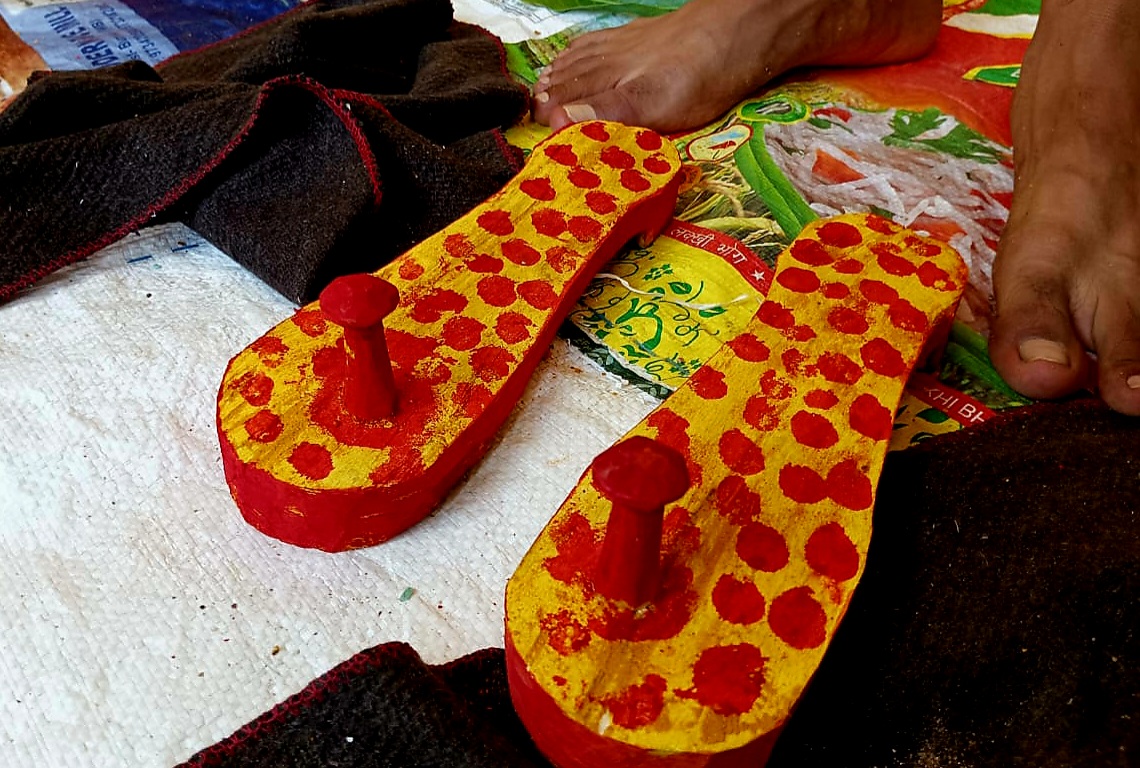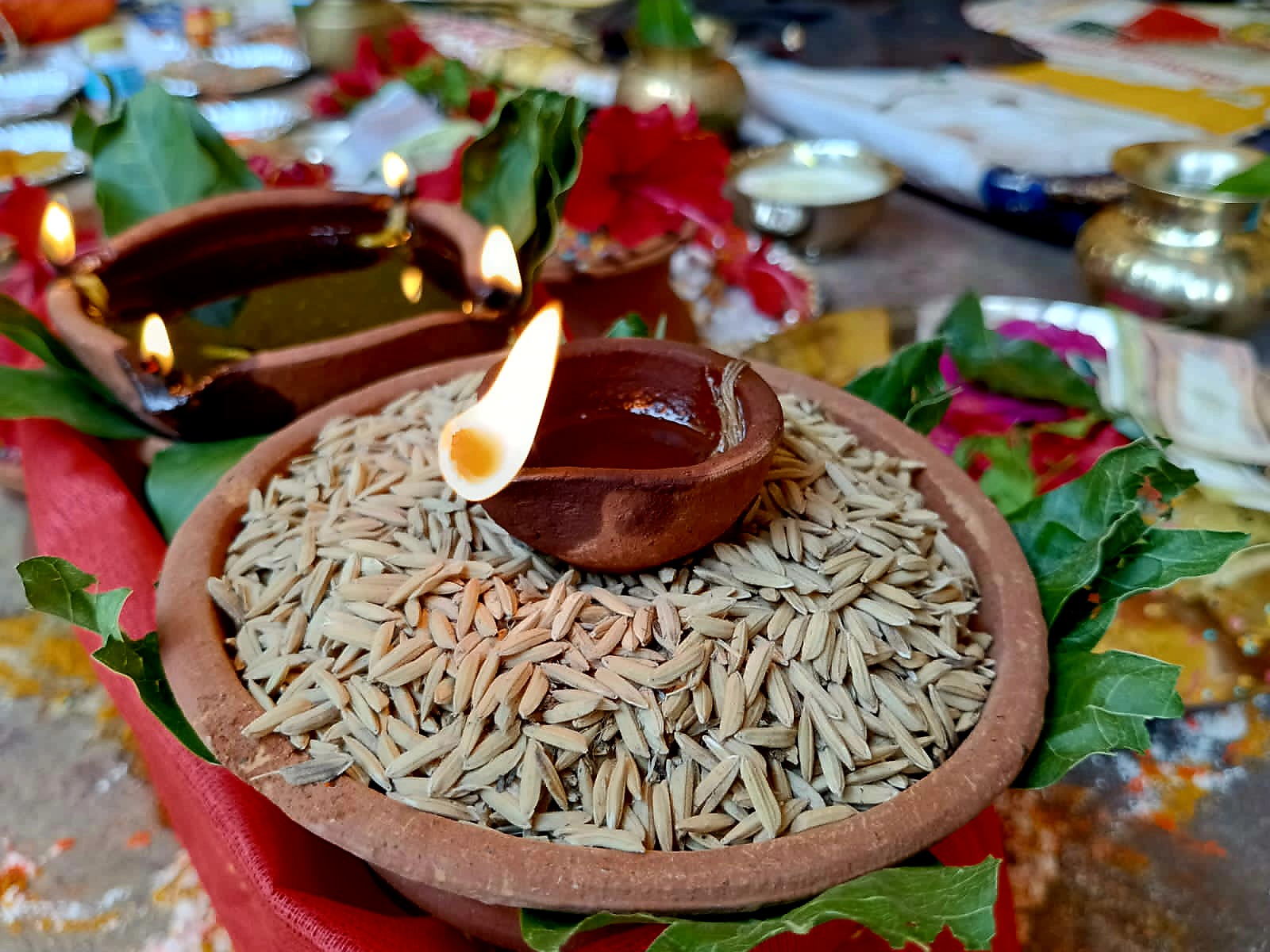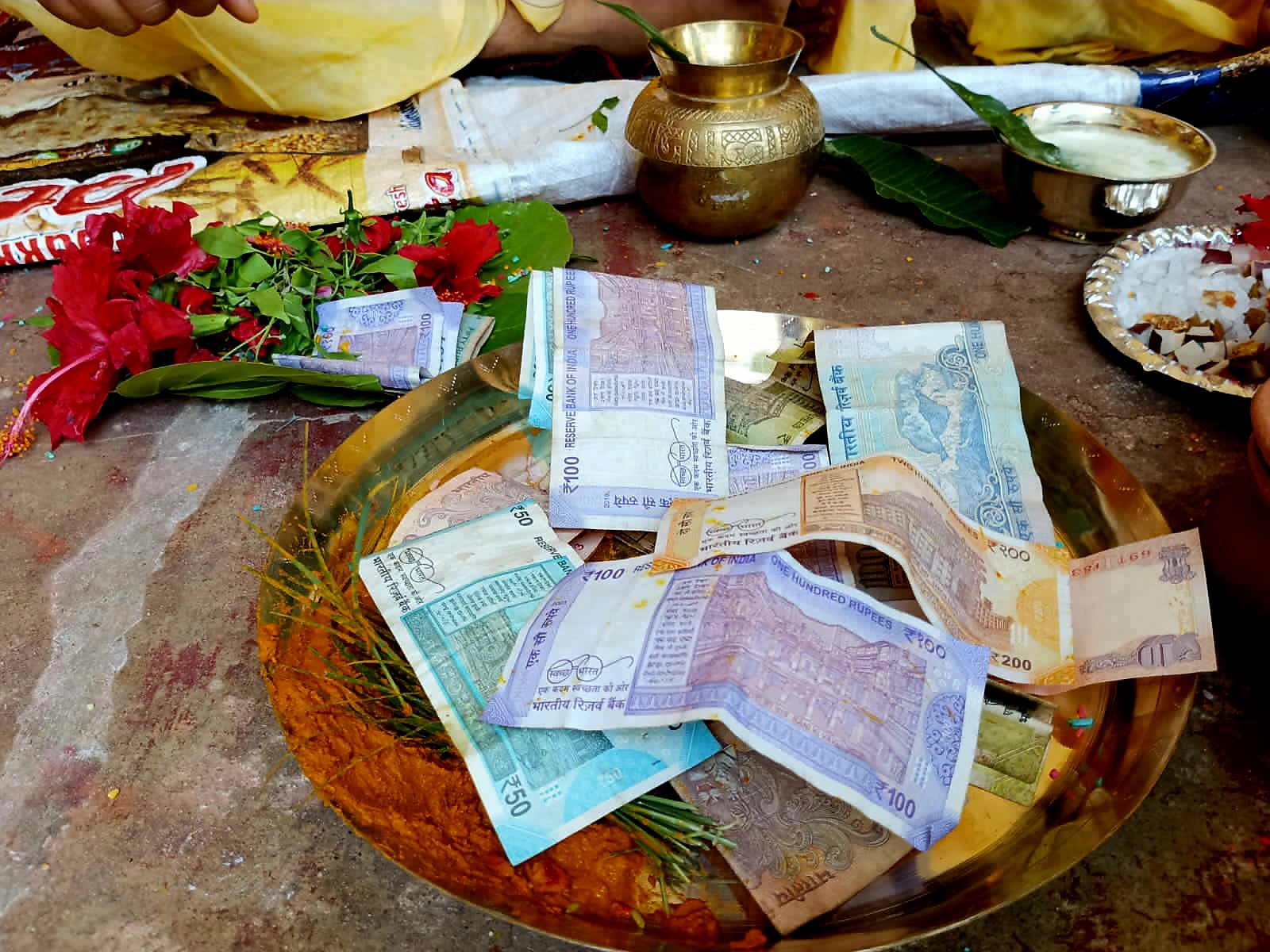India is land of many culture and tradition. One can experience colorful rituals in all the culture. It always get fascinating to witness the excitement of all the function involving various age old rituals. It has been a long time since, I have been part of any such rituals and function. But now when I had the oppurtunity to attend one such family function, I enjoyed it completelly. This was my first family function after a long time. It was a upnayan sanskar function for our brothers. It is also known as Janeu sanskar, in which a sacred thread is tied across the body of the person and it marks their entry into adolescence. The ceremony is traditionally performed for men from the Brahmin, Kshatriya, and Vaishya castes.
Whenever there is talks about Indian culture, it always get very colorful ocassion. What I like most of this function is that the age old practices still exists along with many ancient rituals involving mantras and vedas transcripts. Like this wooden slippers also known as khadeu.

khadeu is what these are known as. This was worn by our brothers during the rituals. Wooden sandals were worn by our priest or sages in ancient times. Pretty hard to walk on this, as we need to get hold of our body weight on two fingers support holding the entire sandals. Pretty amazing how such little things were part of our culture. Many were not aware of this, but thanks to some tradition that these still marks the ocassion.
It is so good to see the every little bit of our culture. The entire rituals took around 3 hrs for completition. It took a heavy toll on our body due to extreme heat. Still we manage to withstand the function and get a glimpse of traditional culture and rituals. Two priest were called to perform the rituals. This janeu hold a high importance in our culture. It was a good time, where i get to enjoy with my families. Especially my brothers who were enjoying too with pictures and some quick puns. Here are some of the pictures, that I took from the ocassion.





Generally, the Upanayana Sanskar is performed on boys who are eight years old. However, woth passing times, and rushing life, many people prefer to perform at later stage, especially during marriage or before marriage. This holds high importance in our culture as it teaches students the importance of self improvement, worship, patience, non-attachment, simplicity, concentration, conscience, discipline, and responsibility. It also teaches students about their debts to their parents, society, and guru. While the priest were their first guru, followed bybtheir parents.
It was so good to be part of such ocassion. Such ceremony were organised and performed on an auspicious date. The three sacred threads represent Brahma (the creator), Vishnu (the preserver), and Siva (the destroyer). Once the rituals get completed, the boys were made to fillow certain rituals for entire life. These rituals were especially means for the boys.
I enjoyed the ocassion and made some good moments learning about the culture and rituals of our family. There is pure joy in being wrapped in cultural elegance.
This post has been manually curated by @steemflow from Indiaunited community. Join us on our Discord Server.
Do you know that you can earn a passive income by delegating to @indiaunited. We share more than 100 % of the curation rewards with the delegators in the form of IUC tokens. HP delegators and IUC token holders also get upto 20% additional vote weight.
Here are some handy links for delegations: 100HP, 250HP, 500HP, 1000HP.
100% of the rewards from this comment goes to the curator for their manual curation efforts. Please encourage the curator @steemflow by upvoting this comment and support the community by voting the posts made by @indiaunited..
This post received an extra 4.51% vote for delegating HP / holding IUC tokens.